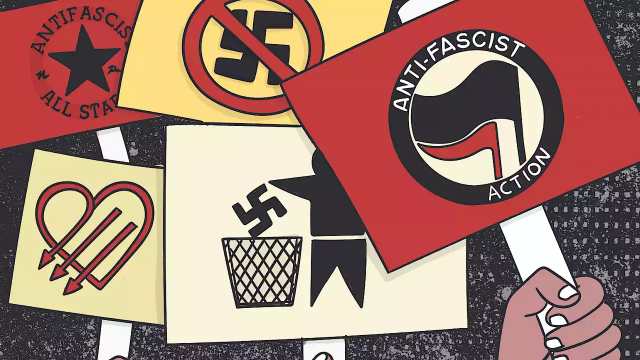Samuel Merrill
CREST Outputs
Projects
Articles
Academic Publications
Violence and Restraint within Antifa: A View from the United States
In recent months recurrent calls have been made by conservative right-wing politicians to designate Antifa a “domestic terrorist organization” in the United States. Fixated on the spectacle of its Black Bloc tactics they have equated Antifa, what is essentially an ad-hoc, non-hierarchical, geographically dispersed social movement comprised of local autonomous activist groups, with organized violent extremists. And yet, the evidence for such an equation has been mostly limited to a handful of instances that usually bare the hallmarks of political exaggeration or are alternatively attributable to individuals loosely associated with the Antifa movement. Why is this so? How do militant anti-fascists in the US understand violence and exercise restraint in their use of it? This article seeks an answer to these questions based on interviews with activists from Portland’s Rose City Antifa, one of the United States’ most well-known Antifa groups, and an analysis of a collection of the group’s Tweets. It reveals that Antifa exercises considerable restraint, internally and externally, with regards to both the literal and rhetorical use of violence within its street and digital activism. In turn it calls upon others to exercise reciprocal levels of restraint by ceasing their labelling of Antifa as a “domestic terrorist” organization.
(From the journal abstract)
Copsey, N., & Merrill, S. (2020). Violence and Restraint within Antifa: A View from the United States. Perspectives on Terrorism, 14(6), 122–138.
https://www.jstor.org/stable/26964730
Projects
Articles
Academic Publications
Violence and Restraint within Antifa: A View from the United States
In recent months recurrent calls have been made by conservative right-wing politicians to designate Antifa a “domestic terrorist organization” in the United States. Fixated on the spectacle of its Black Bloc tactics they have equated Antifa, what is essentially an ad-hoc, non-hierarchical, geographically dispersed social movement comprised of local autonomous activist groups, with organized violent extremists. And yet, the evidence for such an equation has been mostly limited to a handful of instances that usually bare the hallmarks of political exaggeration or are alternatively attributable to individuals loosely associated with the Antifa movement. Why is this so? How do militant anti-fascists in the US understand violence and exercise restraint in their use of it? This article seeks an answer to these questions based on interviews with activists from Portland’s Rose City Antifa, one of the United States’ most well-known Antifa groups, and an analysis of a collection of the group’s Tweets. It reveals that Antifa exercises considerable restraint, internally and externally, with regards to both the literal and rhetorical use of violence within its street and digital activism. In turn it calls upon others to exercise reciprocal levels of restraint by ceasing their labelling of Antifa as a “domestic terrorist” organization.
(From the journal abstract)
Copsey, N., & Merrill, S. (2020). Violence and Restraint within Antifa: A View from the United States. Perspectives on Terrorism, 14(6), 122–138.

